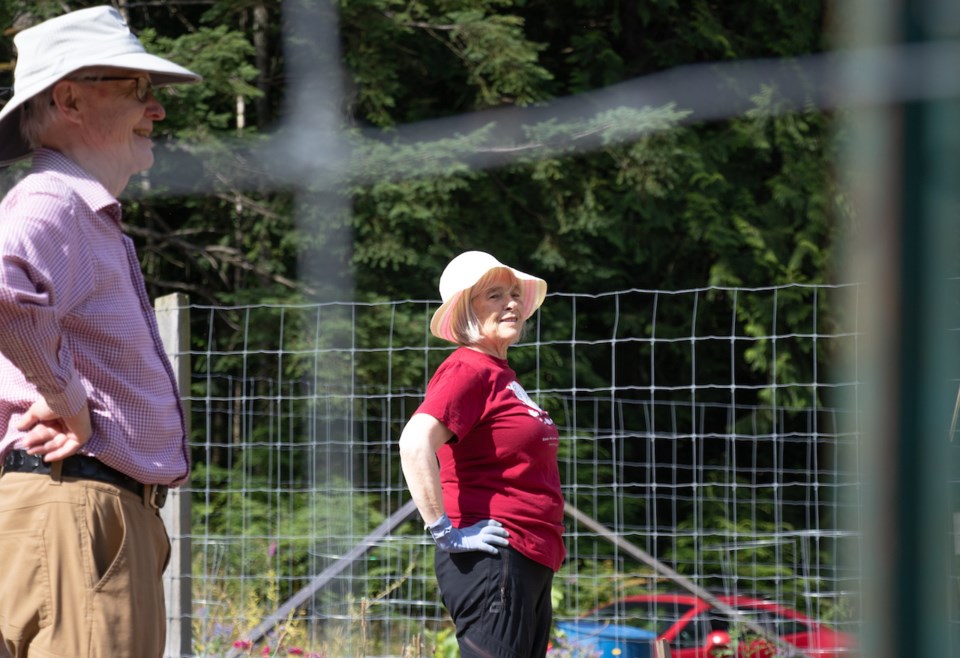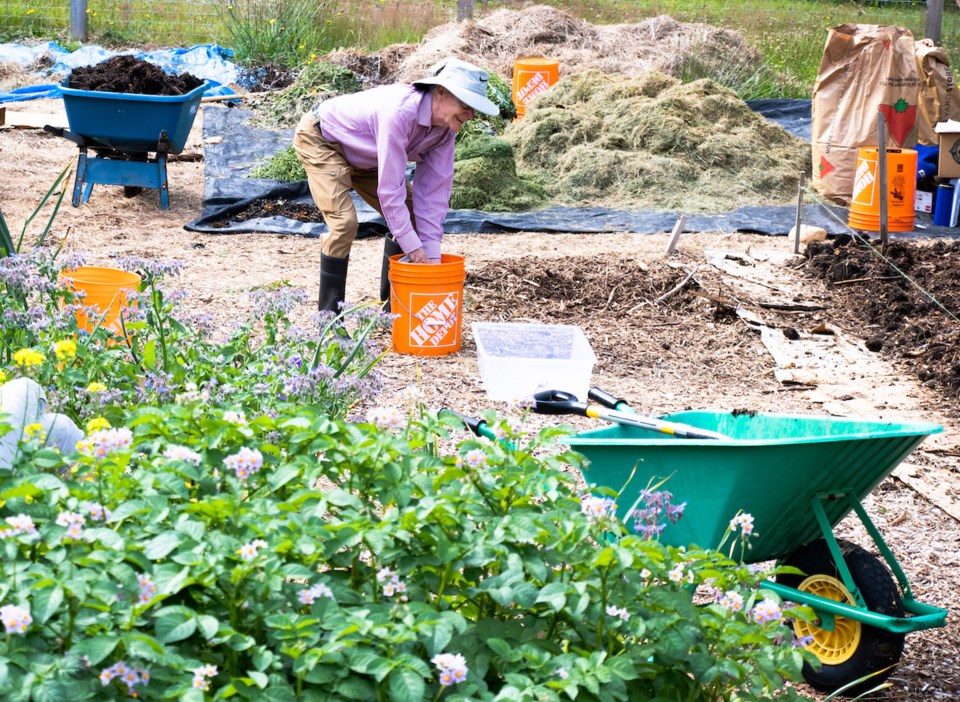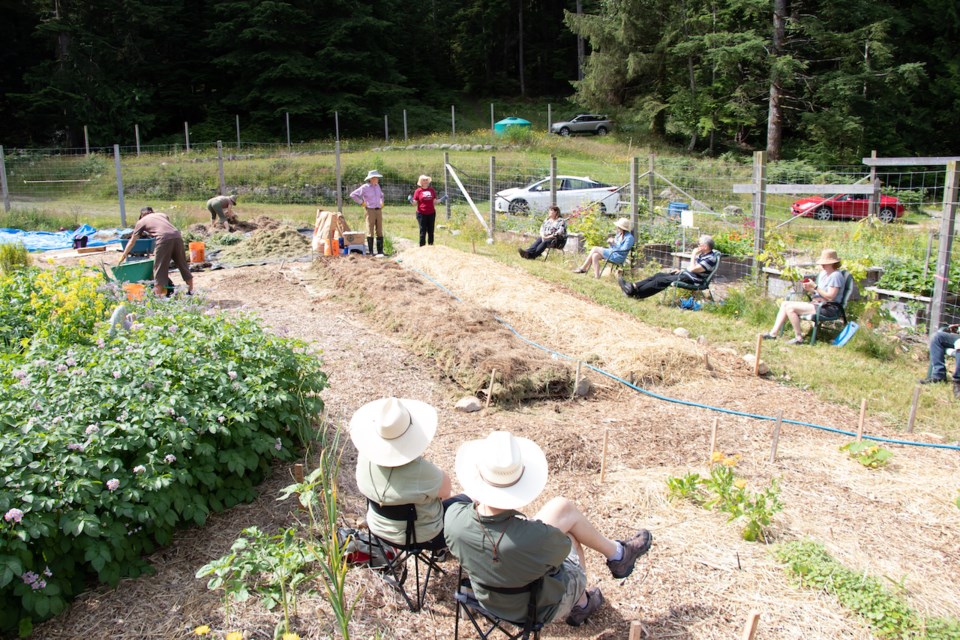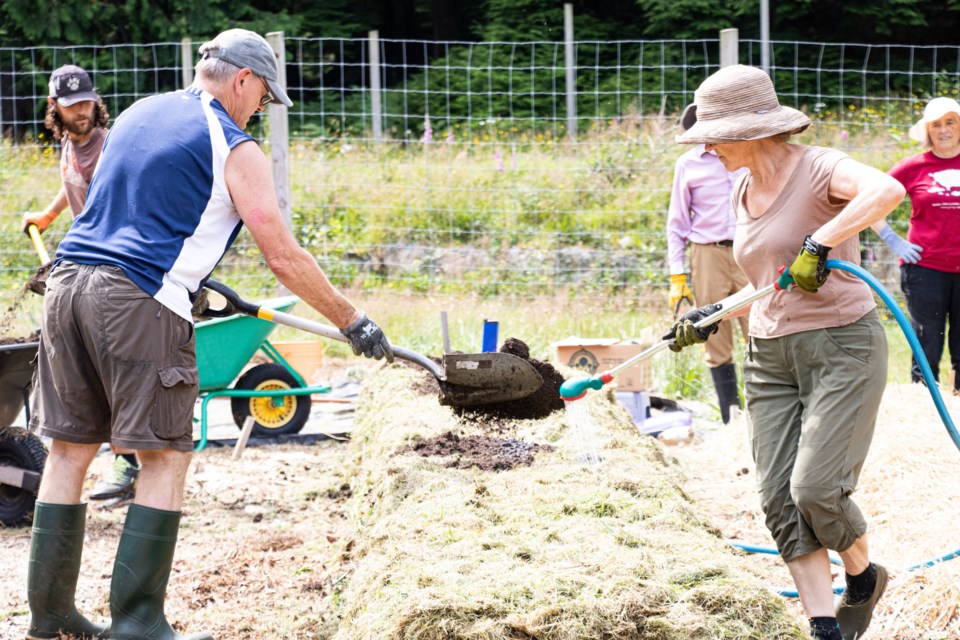No, the mouth-watering scents of ricotta cheese, tomato sauce and noodles topped with parmesan didn’t greet attendees of the lasagna bed making workshop at Grafton Agricultural Commons one hot July morning. But aromas of ripe manure wafted over the full (but well-spaced out) audience.
Lasagna bed gardening, also known as the sheet mulch method, is a no-till method of creating a bed of soil by layering “brown” (nitrogen-high) and “green” (carbon-high) layers (though not all “green” layers are green––manure, high in nitrogen, is a green).

This particular morning was an encore of the previously week’s Bowen Island FoodResilience Society (BIFS)-hosted workshop. BIFS member Jackie Bradley, who has been digging into regenerative agricultural practices the past few years, led the morning.
“We’re trying to gradually wean ourselves off of importing soil,” explained Bradley. The group has operated the commons since the spring. The layers of organic matter (which can include everything from newspaper and cardboard to leaves and sticks) create a compost pile that will break down into a fertile soil, even on top of rock.
Following the practices of regenerative agriculture, the goal is to avoid tilling, using chemical pesticides and using fossil fuel-based fertilizer.
“We lose seven tons of topsoil for every one tonne of food that we grow,” said Bradley’s husband and fellow BIFS member Phil Gregory (referring to non-regenerative agricultural practices).
“One of the big principles of making a lasagna bed is use what you have,” Bradley told the audience. While the lasagna bed of the demonstration the week before had a layer of dried roots, weeds and other things they didn’t want growing beneath the base cardboard layer, this week there were wood chips filling the dip below the bed.
There should be a two-to-one ratio of carbon material to nitrogen explained Bradley. “So the brown layer is about twice as high as the green layer.”
Dried grass (seedless––achieved by cutting grass before seeds had a chance to grow) and dried leaves sent through a leaf blower, as well as plants no longer needed in other gardens were chopped up and added to piles of lasagna fodder. A small pile of rinsed seaweed that’d been washed ashore. Small sticks. When it came to weeds, if there were weeds BIFS didn’t want growing in the beds (eg. grasses or dandelions) they weren’t used, but other weeds BIFS was ok with growing (eg. mustard) were included. The layers were watered well (though if it’s wet out less water is required said Bradley).

When it came to the manure layers, the group’s resident student of biology (Gregory) inoculated the manure with a compost extract diluted in water to introduce a higher diversity of microbes (“nature’s immense underground workforce”) into the soil-to-be.
Pillars of lasagna bed making (and regenerative agriculture) included diversity: “The more diversity you have in your garden, the more you’re going to attract others things from nature to that garden,” said Bradley. Bradley and Gregory started into regenerative agriculture about five years ago. Where their old garden has a slug problem, their new garden (a hugel––another kind of regenerative agriculture) does not as it attracts snakes and lizards that eat slugs, said Bradley.
Roots in the ground: “If you have roots in the soil, then the microbes are being fed. So you want things growing as long as possible in your garden,” said Bradley. She added that people often plant cover crops in the fall to have something growing over the winter providing nutrients to the microbes in the soil. (She said kale grows quite easily over the winter)

Leaving soil undisturbed as much as possible: “No plowing, no tilling because as soon as you do that, you break up all the structure that the microbes have built in the soil,” said Bradley. While one needs to dig a little hole to plant a seed, Bradley said not to make the hole bigger than one needs to.
Finally, keeping the soil covered so as to not allow the carbon in the soil to escape: “My idea of beauty about a garden has completely changed from when I started growing,” said Bradley. “I used to love the look of these beautiful dark beds with plants coming up.
“Now when I look at that I cringe.”
By the end of the workshop a strip of thigh-high organic matter sat ready for seeding (BIFS members assured the audience the bed would shrink as it settled) and Bradley invited audience members to help plant the cover crop. For more information, get in touch with BIFS through its Facebook page.



